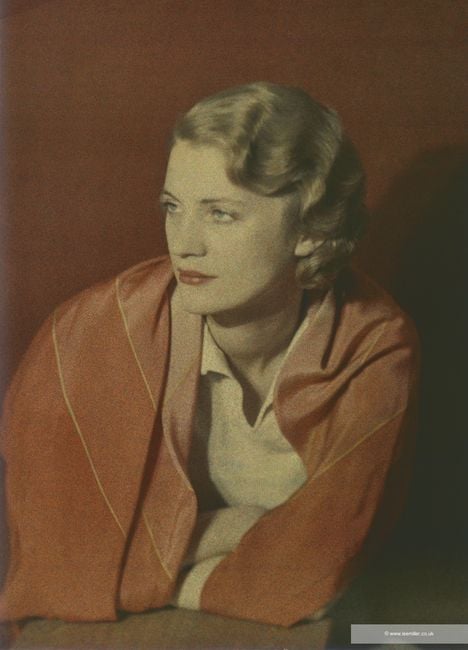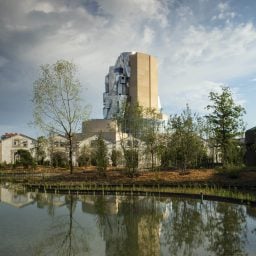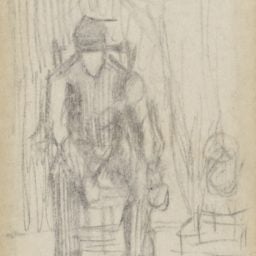Lee Miller earned many descriptors in her lifetime: photographer, muse, model, actress. She was also, to those who knew her, an excellent chef; in the 1940s and ’50s, Miller and her second husband, Roland Penrose, earned reputations among artists and writers as immaculate hosts at their home, Farleys House, in East Sussex, England.
Miller met Penrose, the English Surrealist artist and famed art collector, during a trip to Paris in 1937. She was married at the time to Egyptian businessman Aziz Eloui Bey and had been living in Cairo.
At 30 years old, Miller had already lived a life that read like a novel filled with dazzling coincidences and great drama. At the age of 19, she’d been discovered as a model in New York after none other than Condé Nast, the publisher of Vogue, pulled her back from stepping out in front of a car. Turning to look at her, he was struck by her great beauty.
In 1929, Miller moved to Paris. Interested in the Surrealist movement, she turned up at Man Ray’s studio and presented herself as a potential assistant. He took her on, commencing what would eventually become one of art history’s greatest love affairs.
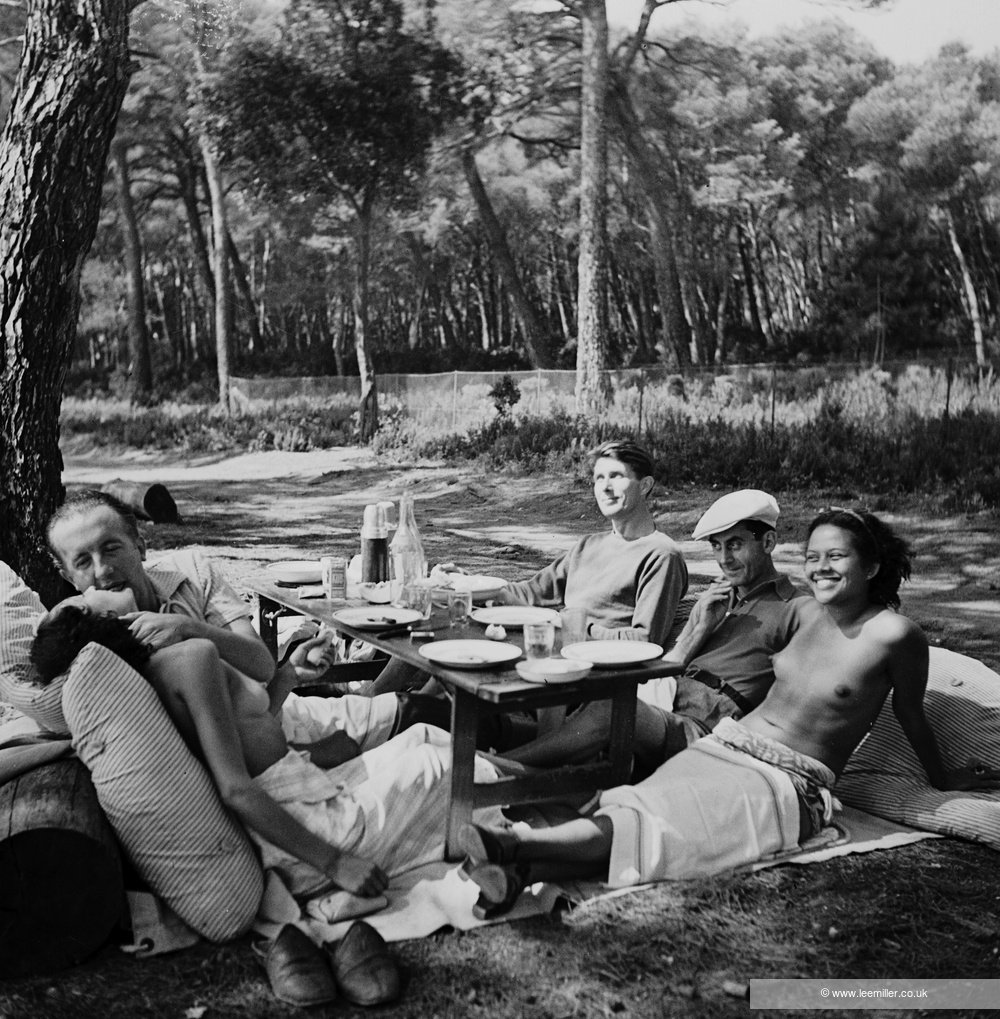
Lee Miller, Picnic with Nusch and Paul Ėluard, Roland Penrose, Man Ray, and his girlfriend Ady Fidelin. This photograph was made soon after Penrose, a British surrealist painter had met Miller.
In 1939, a few years after Miller and Penrose met, she moved to London to pursue the relationship and soon became a field correspondent and photojournalist in the heat of World War II.
She would go on to witness the liberation of Paris and document the liberation of the Dachau. (In Munich, her mentor, David E. Scherman, captured the famed image of Miller bathing in Hitler’s bathtub, only hours before he and Eva Braun died by suicide in Berlin.)
By the late 1940s, with the war over, Miller, Penrose, and their son, Antony, moved to Farleys House, a property Penrose purchased in 1947. Needless to say, the environment presented a change for the thrill-seeking Miller. Today a museum, the house was built on 200 acres along with three cottages, a handful of sheds, and even a malt house.
The narrative of Miller’s career often dwindles with her move to Farleys House. (She ended her professional career in 1954.) But an upcoming exhibition, “The Woman Who Broke Boundaries: Photographer Lee Miller,” which opens July 3 at the Dalí Museum in St. Petersburg, Florida, offers greater insight into the portraits she made of writers and artists throughout her life, which she continued to take in Farleys House. (The show also features a small selection of striking self-portraits and images made at the end of World War II).
Here, photographs from her years in Paris and London flow naturally into the next chapter of her life, one marked by a sense of ease and familiarity.
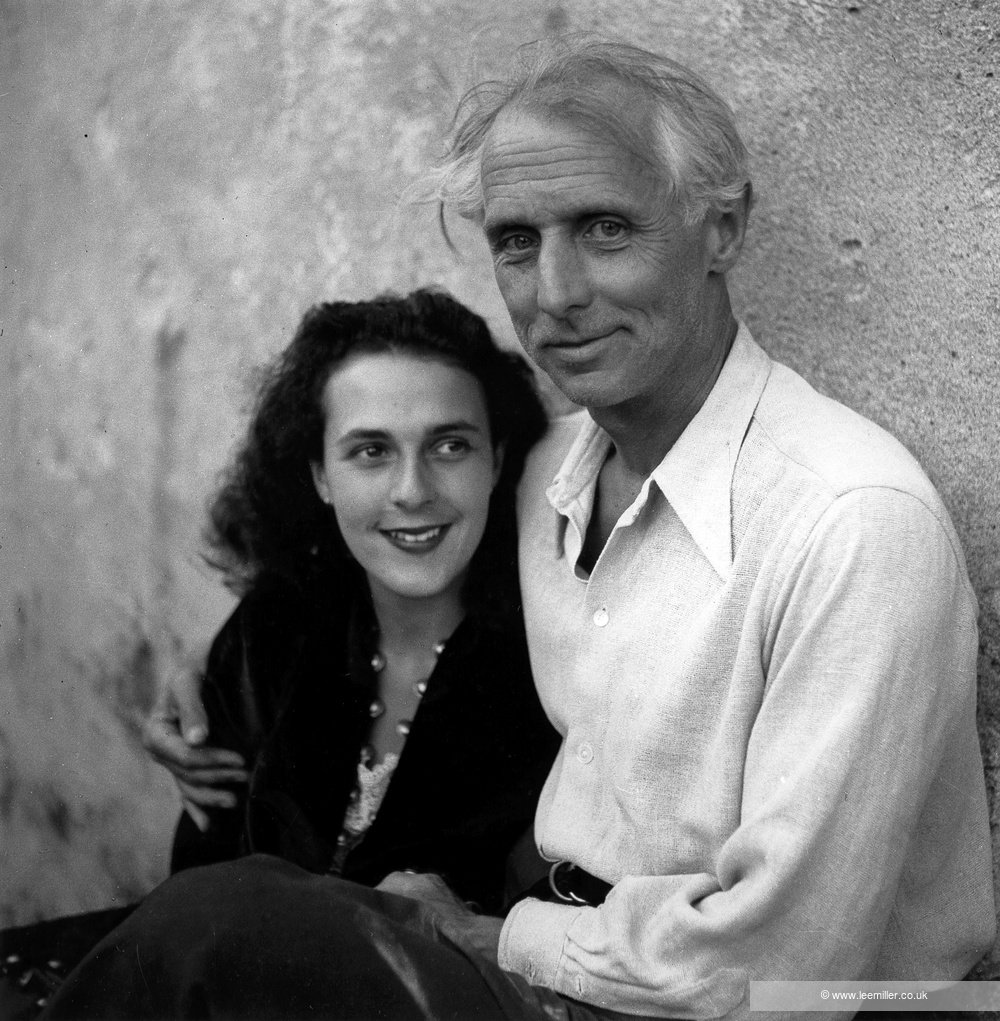
Lee Miller, Leonora Carrington and Max Ernst. Published in Scrap Book by Roland Penrose, 1981
In the biography Lee Miller: A Life, author Carolyn Burke describes the transformative period during which Miller and Penrose became “determined to grow their own produce” and studied books on horticulture. Miller even learned to slaughter a pig ahead of the Christmas holiday.
The couple exhausted themselves restoring the house and the property, while Penrose simultaneously worked towards the opening of the Institute of Contemporary, which he founded on Dover Street in London.
The house became an artwork and a living museum, as Penrose “filled its rooms with French provincial antiques, arranged Henry Moore sculptures on the lawn, [and] carved images on tree trunks,” Burke writes.
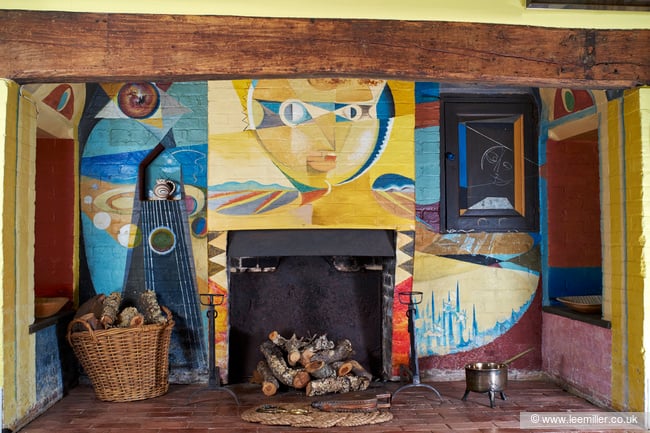
Fireplace, Dining Room, Farleys House, East Sussex, England by Tony Tree. © Lee Miller Archives, England 2021. All rights reserved. leemiller.co.uk
Miller, meanwhile, welcomed an array of writers, artists, and scholars, cooking elaborate meals. Picasso dropped in on several occasions, noting his appreciation of the “Ayrshire cows, open log fires, a whiskey and soda nightcap, hot water bottles, cooked breakfasts, and tea” that Miller provided.
Picasso, whom Miller photographed during his stay, in turn, painted onto the tiles surrounding her stove.
“Miller’s Picasso photographs are among the most numerous of the artist, revealing a casual intimacy between the two,” according to a text provided by the Dalí Museum. “Miller and Penrose adored Picasso.” (Penrose even eventually wrote a biography of the Spanish painter.)
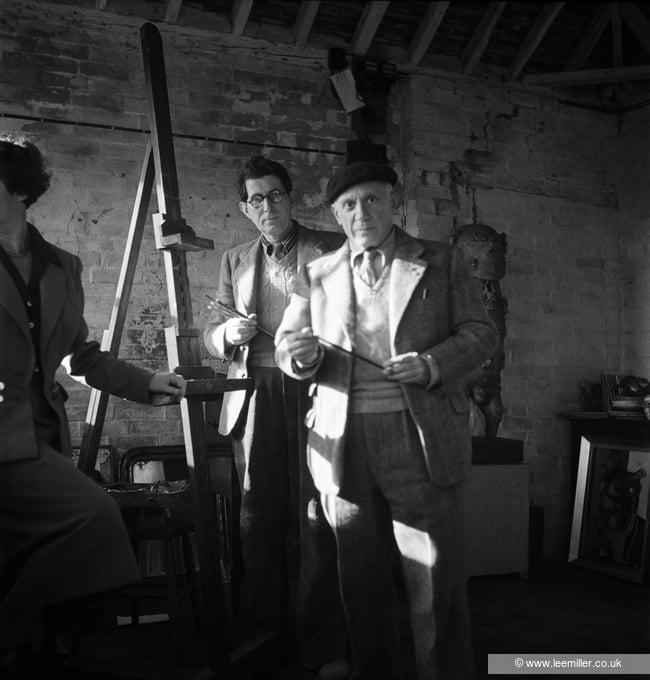
Roland Penrose and Picasso in Roland’s Studio, Farley Farm, Chiddingly, England by Lee Miller. © Lee Miller Archives, England 2021. All rights reserved. leemiller.co.uk
Published in Visiting Picasso – The Notebooks and letters of Roland Penrose by Elizabeth Cowling, 2008, page 67, Thames Hudson, London.
On another occasion, Max Ernst and Dorothea Tanning came for Easter. Other guests included John Craxton, John Golding, Joan Miró, and Man Ray, with whom Miller remained lifelong friends.
“Despite officially ending her photography career in 1954, many of Miller’s artist and writer friends visited Farleys, and she continued to photograph them. These warm friendships are reflected in the casual and lighthearted way in which Miller portrays them,” the Dalí Museum said.
If Miller’s photographs are any testament, her subjects felt right at home.
